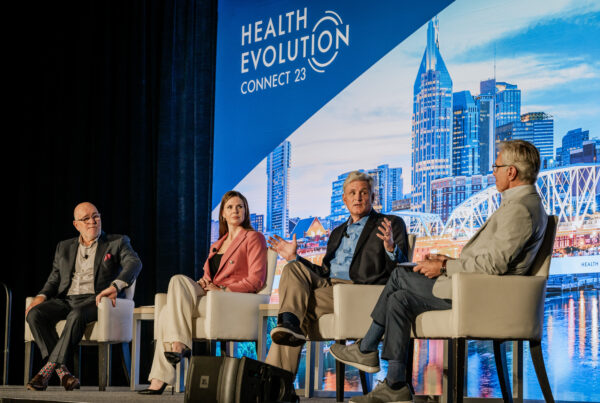There’s been enormous growth in Medicare Advantage (MA). A Kaiser Family Foundation analysis of CMS data shows that, as of January 2023, 30.19 million of the 59.82 million people enrolled in Medicare, or about 50%, were enrolled in a private MA plan. That’s up from about 37% in 2018, the analysis found.
As MA has grown in popularity among Medicare enrollees, the program also has become a robust source of revenue for health plans. According to the Kaiser Family Foundation, health insurers’ margins in the MA market were more than twice as high as their margins on other lines of business in 2021, with gross margins in the MA market averaging $1,730 per enrollee that year.
Some groups argue that MA’s growing dominance ultimately will help to lower the United States’ spending on health care by improving beneficiaries’ overall health. But questions loom about whether the shift toward MA will actually generate savings or drive further, unsustainable spending. Flashpoints are mounting over annual rate increases, risk adjustment, star ratings, audit rules, and more, raising uncertainty around what the future of MA will be.
At Health Evolution’s 2023 Summit, industry experts and leaders came together to address these pressing questions and explore what’s next for MA. Andy Slavitt, General Partner, Town Hall Ventures, Former Senior Advisor to the Biden Administration COVID Response, Former Acting Administrator, CMS, and Host of In the Bubble with Andy Slavitt, moderated a discussion titled “The New Medicare Advantage Majority – Where Do We Go from Here?” featuring leaders Karen Ignagni, CEO, EmblemHealth; Sachin Jain, MD, CEO, SCAN Group and SCAN Health Plan; and Richard Merkin, MD, Founder, President & CEO, Heritage Provider Network.
During the conversation, leaders discussed how MA is helping to transform health care now, as well as three key ways the program must evolve to be sustainable, equitable, and continue serving the needs of older adults in the future.
How MA is transforming health care now
Leaders noted that MA plans’ emphasis on benefit innovation has helped to transform the way Medicare beneficiaries receive care by focusing on preventive services and addressing social drivers of health. “It’s very exciting how much Medicare Advantage has driven prevention. The data show that very compellingly,” Ignagni said.
For example, Ignagni shared that EmblemHealth has launched programs focused on “improving patients’ health and going more upstream” in their care journey. The organization established a separate company within its ecosystem that centers on wellness, including “a coaching apparatus” that has had “high satisfaction and approval,” Ignagni said. The company has “run programs on burnout, body image, and diabetes management, including nutritional counseling,” and more, in its effort to “go upstream” in patient care, she explained.
Ignagni said health plans are uniquely positioned to innovate and be leaders of prevention and wellness-focused care. “As we think about the future and innovation, prevention and wellness need to be a part of it. And only health plans are in a position to be able to marshal these resources with provider partners to actually do this job from beginning to end,” Ignagni said.
Jain also said that MA plans’ “remarkable benefits innovations” have helped to transform health care for older Americans. “When you think about what traditional fee-for-service Medicare provides for older adults, there are big gaps in the program,” such as not including coverage for vision, dental, or audiology services, Jain said. Those are services “Medicare Advantage plans have covered for a really long time,” but would require a “literal act of Congress” for traditional Medicare to cover, he explained.
Merkin, too, noted that “Medicare Advantage allows the opportunity to be creative” when it comes to the types of services and care plans cover. He mentioned MA programs that allow patients to access more home-care solutions and more innovative care teams, such as leveraging pharmacists to help patients manage diabetes. “There’s a different set of circumstances in every community, and not every solution will be identical in every community,” but Medicare Advantage allows payers and providers the flexibility to deliver care in new ways that work best for the patients they’re serving, Merkin said.
Medicare Advantage plans not only are transforming health care through the types of services they cover, but also through ensuring patients receive high-quality coverage and care, Ignagni said. “We’ve driven quality in a very significant way. And indeed, fee-for-service Medicare has adopted a number of the incentives that Medicare Advantage plans pioneered. So I think that’s very exciting, and the residual effects are also very positive, meaning lower readmissions and more reliable sources of care,” she said.
Ignagni noted that MA plans can continue to be leaders in driving quality, as well as equity, in coverage and care. “We’re on the front lines of addressing equity, social determinants of health,” and quality, she said. “There’s a lot of work to be done” around “how do we judge what’s good and what’s bad and how do we standardize measurement, and I think MA plans can be very big leaders in all of that,” Ignagni said.
Three ways MA must evolve
While Medicare Advantage has driven innovation and positive change in health care, leaders recognized the MA program must continue to evolve to ensure it is sustainable, equitable, and able to serve the needs of older adults in the future. Leaders identified three key ways MA plans should look to drive change.
1. Update risk adjustment models and better align coding with care
Slavitt acknowledged criticisms of the MA risk adjustment program, which he said was designed to compensate MA plans for providing coverage and care to patients with complex conditions that could “be more expensive” to manage. However, he noted that plans sometimes are reimbursed higher amounts to cover services to manage those complex conditions but don’t spend that money on providing those services. “So, for example, patients are getting coded as having severe malnutrition, but plans aren’t spending any more money on those patients. Or plans are reimbursed differently for patients with diabetes and patients with diabetes with complications, but plans aren’t spending more money on the patients with diabetes with complications,” Slavitt explained.
Leaders agreed that current coding and risk-adjustment processes need to change so they’re more aligned with the services and care plans provide.
“The latest debate on risk adjustment really shows that we need to do more work on aligning coding and care,” Ignagni said. MA plans are responsible for helping to make those changes, “because not only is it responsible to do the right thing for beneficiaries, but also to be change agents,” she said.
To do so, Ignagni said plans should build an infrastructure to ensure and demonstrate that patients are receiving care for the complex conditions and services for which they are coded, set high accountability standards for the external vendors they work with to perform coding verification, educate providers about the clinical documentation needed for codes, and work to delete codes for which there’s no clinical evidence to support their use. “I think these are common sense things that could help the industry partner with CMS to think about the future, think about doing the right thing for beneficiaries, and allow us to continue to push the envelope” on care and benefit innovation, Ignagni said.
Jain said he believes there’s “an incredible opportunity to blow up” the current risk-adjustment system and “do real time adjudication of risk.” He noted that, even with all the recent advancements in electronic health records, artificial intelligence, and other technologies, the health care industry still is “talking about these analog processes that we’ve been using for 25 years and making incremental tweaks on the margins” instead of testing wholly new ways of managing risk adjustment.
Jain said plans should partner with CMS’ Center for Medicare & Medicaid Innovation to build, test, and implement a new model “that learns in real time what’s actually happening with patients and pays something closer to a real case rate as opposed to some benchmark.”
2. Make it easier for beneficiaries to shop for plans based on quality and health outcomes
Jain said Medicare Advantage also should test new ways to make it easier for beneficiaries to shop for MA plans based on the quality of services and care the plans provide, including metrics on health outcomes for enrollees.
“I think we’ve created a really confusing marketplace for older adults,” Jain said. “We have competition every year that takes place on small and marginal changes in benefits, but we don’t have the kind of competition we want to have on outcomes. Too often, quality ratings are obscured, and people are choosing plans based on whatever the shiniest benefit is. And so I think there’s really some important opportunities that we have to innovate on” how MA plans are sold, Jain explained.
3. Continue to innovate on benefits and care delivery
Slavitt noted that, as Medicare Advantage enrollment continues to grow, private health insurers increasingly are taking on the promise and obligations of the Medicare program to be a responsible steward of taxpayer dollars while providing high-quality care for Medicare beneficiaries.
Jain agreed that MA plans “owe it to older adults to provide the very best health care they can,” as well as to serve as leaders that “shape the contours of how health care is delivered to everyone.” To do so, Jain said MA plans should push for changes that would “build a clinical-first Medicare program.”
“I think we have to think differently about this program and how it can actually serve the needs of older adults,” Jain said. “When you think about where the program started and where we are today, we haven’t made the kind of leaps in the organization and structure and delivery of care as we have in clinical science. And in the same time that we’re talking about CRISPR and gene editing, we’re also still talking about fee-for-service Medicare and whether it covers vision services. So when you think about that contrast, I really think the country needs a broader re-imagination of the Medicare program,” he said.
Merkin also called for more innovation in MA. “I believe that, within the next decade, there’ll be two types of health care organizations: those that embrace Medicare Advantage and those that are out of business. And even within the Medicare Advantage colleagues, there will be two types: ones that depend almost entirely on revenue arbitrage and those that actually tried to innovate to lower health care costs and improve quality,” Merkin said.
“If you embrace the status quo and are using the same tools, same processes, and same technology, just by definition, there’s not going to be any innovation,” Merkin continued. “I think we have to throw out the playbook and aim for something that’s going to be 10 times better.”
“That’s going to be challenging politically and economically,” Merkin said, “but we should do something different”—and MA plans need to take the lead. “You can’t expect regulators and government to do this. The people working day to day, they have to invent things that will help our seniors and the entire health care system,” he said.










